Orange urine in women, it is not the norm, therefore, when its color changes, one should find out the reasons that could provoke this phenomenon. Both physiological and pathological processes can cause a symptom.
Record content:
- 1 Reasons for the appearance
- 2 Possible diseases
- 3 Diagnostics
- 4 When to see a doctor
- 5 Prophylaxis
-
6 Treatment methods
- 6.1 Medications
- 6.2 Traditional methods
- 6.3 Other methods
- 7 Possible complications
- 8 Video about abnormal urine colors
Reasons for the appearance
Normally, urine in an adult has a straw color. If the color of urine changes and acquires an orange tint, while there are no accompanying symptoms in the form of pain in the lower abdomen, frequent urge to urinate, increase in temperature, the reasons for the color change lie in:
- eating colored food: carrots, beets, lingonberries, sea buckthorn, tomatoes, oranges or grapefruits, as well as fresh juices from the listed fruits;
- the development of dehydration against the background of food poisoning or insufficient fluid intake;
- taking medications: anticoagulants, analgesics, antibacterial agents;
- taking vitamin complexes containing B vitamins and retinol;
- the release of antidiuretic hormone during nighttime sleep, which changes the color of urine to a more intense and concentrated.

Urine that is bright yellow or another shade can be triggered by the above diseases
A change in the color of urine in women may be associated with the features of the course of pregnancy at a later date:
- the development of gestosis - a pathology that causes fluid retention in the body and provokes severe swelling, as a result of which the urine acquires a dark orange tint;
- the body's natural reaction to a growing fetus, which puts pressure on internal organs, including the ureter.
Darkening of urine is also observed with ARVI, when there is a significant increase in temperature to 38-39C. The body does not receive the required volume of fluid and dehydration develops, which leads to an increase in the concentration of urochrome and nitrogenous toxins. This affects the color of the urine and changes its color to dark orange.
Possible diseases
Orange urine in women, the reasons for the appearance of which are associated not only with physiological processes, can be caused by the presence of various diseases of the genitourinary system:
| Cystitis | Inflammation of the bladder wall, accompanied by:
|
| Pyelonephritis | Kidney damage caused by exposure to various bacteria. Symptoms:
|
| Urolithiasis disease | Urological disease, which is manifested by the formation of stones in various parts of the urinary system. Pathology is accompanied by:
|
| Glomerulonephritis | An immune-inflammatory disease that affects the renal glomeruli. Symptoms of pathology:
|
Diagnostics
To identify pathological processes that provoked the appearance of orange urine, laboratory diagnostic methods are used.
These include:
-
General urine analysis - a comprehensive laboratory study that reveals the physical and chemical characteristics of urine. The biological material taken for further study is evaluated according to several indicators, namely: color, transparency, specific gravity and acidity. Also, using the analysis, the presence of specific substances is determined: glucose, leukocytes, ketone bodies, bile pigments. For the analysis, morning urine is used, which is examined using microscopic examination. The average cost is 200 rubles.
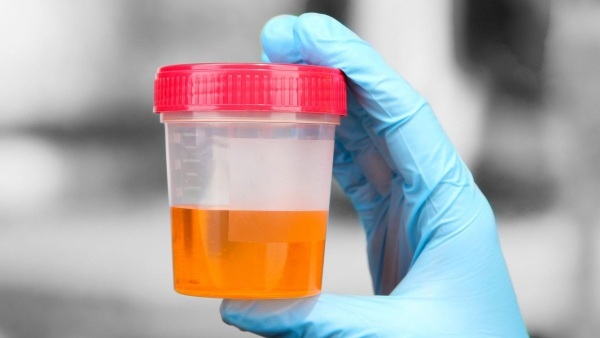
- Urine sample according to Nicheporenko - a study that evaluates the quantitative content of erythrocytes, leukocytes and cylinders contained in 1 ml of urine. Often, this study is used to clarify or confirm the diagnosis, which is indicated by the results of a general urine test. For a sample, an average portion of urine is taken, collected in the morning immediately after waking up. To do this, the first 15-20 ml of urine is drained into the toilet, the next portion (about 30 ml) is collected in a special container, and the rest of the urine is again drained into the toilet. The results of the analysis can be obtained one day after the delivery of the biological material. The cost is about 400 rubles.
- Bacteriological analysis of urine - a study used to identify the pathogen in the body, which provoked the development of the inflammatory process in the organs of the urinary system. The diagnostic method is used when a general urine test indicates bacteriuria. The sowing tank gives a detailed picture of the composition of the pathogenic flora and indicates the specific name of bacteria and fungi. To carry out the study, the biomaterial is stained according to Gram, which makes it possible to recognize the pathogen under a microscope with an immersion lens. Next, the urine to be examined is placed on special nutrient media, favorable for the development of pathogenic bacteria, and examined under a microscope. Analysis cost - from 1000 rubles.
To identify the inflammatory process, laboratory blood tests are also used:
- General blood analysis - a comprehensive clinical study, during which the qualitative and quantitative composition of blood is assessed. The analysis allows you to identify the volume of leukocytes, erythrocytes and platelets. For diagnostics, venous or capillary blood collected in the morning is used. The biological material is examined under a microscope. The cost of the analysis is about 200 rubles.
- Blood chemistry - a complex laboratory study, consisting of a number of tests, the composition of which varies depending on the diagnosed disease. Venous blood is used as a biomaterial for the analysis. Research results are prepared in 1 day. Cost - from 400 rubles.
Instrumental diagnostics is used to study the kidneys and urinary system in case of urolithiasis or suspected pyelonephritis.
Instrumental methods include:
-
Kidney ultrasound or the bladder allows you to assess the work of organs and identify stones of any type and localization in the presence of stones, as well as track structural changes in the renal tissue in pyelonephritis. Cost - from 1000 rubles.
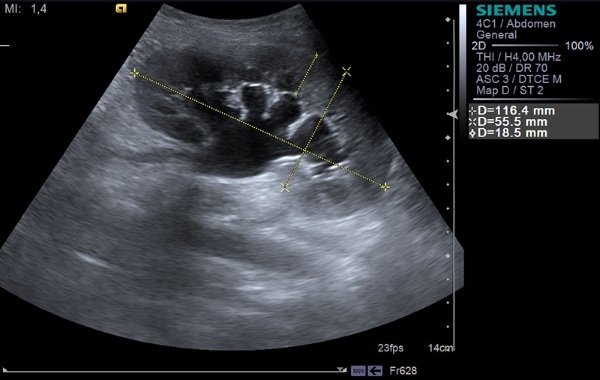
- X-ray diagnostics is presented by plain urography, which visualizes the general structure and location of the organs of the urinary system. The method allows detecting the presence of X-ray-positive stones in the bladder, kidneys or ureter. Cost - from 1800 rubles.
- CT scan - a method used to diagnose urolithiasis. Instrumental examination allows you to determine the exact location, size and density of stones. Cost - from 5000 rubles.
When to see a doctor
Orange urine in women (the reasons may be associated with medication) does not always indicate the presence of pathology. Discoloration of urine without accompanying symptoms should not be a cause for concern. This could be due to eating certain pigmented foods, mild dehydration, or nighttime urine congestion.
It is necessary to consult a doctor if additional warning signs appear that may appear simultaneously with a change in the color of urine:
- increased body temperature;
- cramps and burning when urinating;
- pain in the lower abdomen or in the lumbar region;
- nausea;
- vomit;
- excessive sweating;
- frequent urge to urinate.
If symptoms of general malaise appear, you should contact your local therapist. With specific symptoms that signal pathologies of the organs of the urinary system, you should visit a urologist or nephrologist.
Prophylaxis
For the prevention of diseases that provoke a change in the color of urine, you need to adhere to some recommendations:
- avoid hypothermia;
- observe the hygiene of the external genital organs;
- in time to eliminate any inflammatory processes that have arisen in the lower parts of the urinary tract
- observe the drinking regime;

- lead a healthy lifestyle;
- avoid eating excessively salty or spicy foods.
Treatment methods
Orange urine in women (the causes may be associated with excessive production of urochrome or urobilin) is often excreted during kidney or bladder diseases. To eliminate pathologies, complex treatment is used, consisting of drug therapy and physiotherapy methods, as well as surgical intervention, if necessary.
Medications
Medicines are selected based on the diagnosis formulated during the diagnosis.
If the cause of the appearance of orange urine is cystitis or pyelonephritis, the following groups of drugs are prescribed:
- antibacterial;
- anti-inflammatory;
- diuretics (diuretics);
- pain relievers;
- multivitamins.
The most prescribed drugs from the group of antibiotics include:
-
Ciprofloxacin - antibiotic of the group of vokhinolones, which has a bactericidal effect. The drug is rapidly absorbed in the gastrointestinal tract and distributed in tissues and body fluids. The agent is taken at 250-750 mg 2 times a day. The duration of treatment is from 7-10 days to 4 weeks. Cost - from 30 rubles.
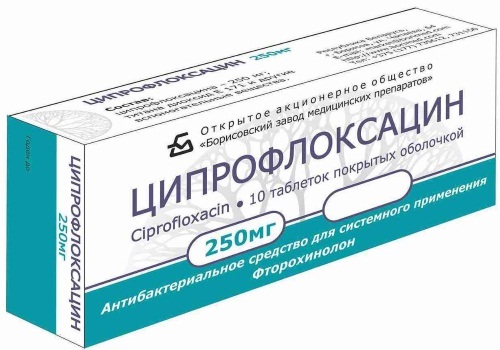
- Amoxicillin - a preparation in the form of capsules belonging to the group of semi-synthetic penicillins with a wide spectrum of action. The maximum concentration of amoxicillin in blood plasma is reached 1-2 hours after administration. The dosage regimen is 250-500 mg at a time every 8 hours. Cost - 104 rubles.
The action of anti-inflammatory drugs for cystitis and pyelonephritis is aimed at eliminating inflammation, decreased capillary permeability, reduced pain and increased body temperature.
This group of funds includes:
- Movalis - NVPS, a derivative of enolic acid, which has analgesic and antipyrtic effects. The maximum daily dose of the drug should not exceed 15 mg. The dosage regimen and duration of admission are determined individually. Cost - from 580 rubles.
- Nimesulide - a preparation in the form of granules for the preparation of a solution. It has a pronounced anti-inflammatory and analgesic effect. The agent is taken at 100-200 mg 2 times a day. The cost is about 180 rubles.
Diuretics for cystitis are used to enhance diuresis, as a result of which pathogens cannot gain a foothold on the mucous epithelial layer of the bladder.
Diuretics include:
-
Kanephron - a herbal diuretic drug. The tool has not only a diuretic, but also an anti-inflammatory, antimicrobial effect. The drug is taken orally, dissolving in a small amount of water. Dosage regimen: 50 drops 3 times a day. Duration of admission is from 2 to 4 weeks. Cost - 500 rubles.
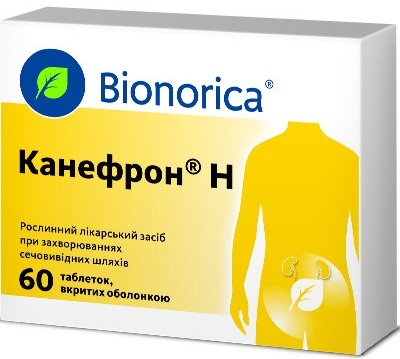
- Cyston - a combined herbal preparation with a diuretic and antimicrobial action. The tool is taken 2 tablets 2 times a day until the process is eliminated. The cost is about 450 rubles.
Painkillers relieve the symptomatic manifestation of pathology, improving the general condition of the patient.
The most commonly prescribed analgesics include:
- Baralgin - a pyrazole derivative in the form of tablets. It has analgesic and antispasmodic effects. A single dose of the drug is 500 mg. the maximum daily dose should not exceed 2000 mg (4 tablets). The cost is about 200 rubles.
- Pentalgin - a combined anesthetic drug containing paracetamol, naproxen, coffee and drotaverine. The agent is prescribed orally 1 tablet 1-3 times a day. The duration of treatment should not exceed 5 days. Price - about 200 rubles.
In the treatment of urolithiasis, analgesics and antispasmodics are also used to eliminate pain. As agents that promote the dissolution and elimination of calculi, preparations based on terpenes are used - hydrocarbons that are part of the essential oils of conifers and other plants.
The medicines of this group include:
-
Rovitinex - phytopreparation, the action of which is aimed at disintegration and excretion of kidney stones and stones of the urinary tract. The tool is taken before meals, 1 capsule 3 times a day. The duration of treatment is determined individually. Cost - 1400 rubles.
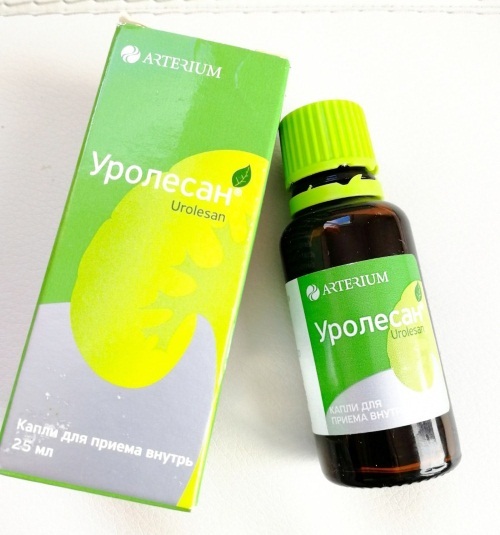
- Urolesan - phytopreparation based on coniferous oils, peppermint oil and castor oil, which helps to increase urine output. The tool is used in 8-10 drops 3 times a day, using a solution on a piece of sugar. The duration of the course is 5-30 days. Price - 320 rubles.
Traditional methods
Orange urine in women is often excreted due to the accumulation of a large amount of pathogenic flora on the walls of the bladder, as well as in the inflammatory process in the kidneys.
To increase urine output, which promotes the elimination of pathogenic bacteria, it is necessary to take teas based on medicinal diuretic herbs:
- Rosehip infusion. 2 tbsp. l. place the rose hips in a thermos and pour 1 liter of boiling water. Insist the mixture for 24 hours. Drink the infusion 3-4 times a day, drinking 1 glass at a time.
- Decoction of chicory roots. Pour 20 g of chopped chicory root with 700 ml of hot water and boil over low heat for 10 minutes. Insist the solution for about 1 hour, and then strain and take 50 ml 2-3 times a day.
-
A decoction of pharmacy chamomile. 2 tbsp. l. pour the dried flowers of the plant with 1 glass of hot water, bring the mixture to a boil and simmer over the fire for 5-10 minutes. The resulting solution must be cooled and filtered. You need to take the broth 2-3 times a day for 1/3 cup.
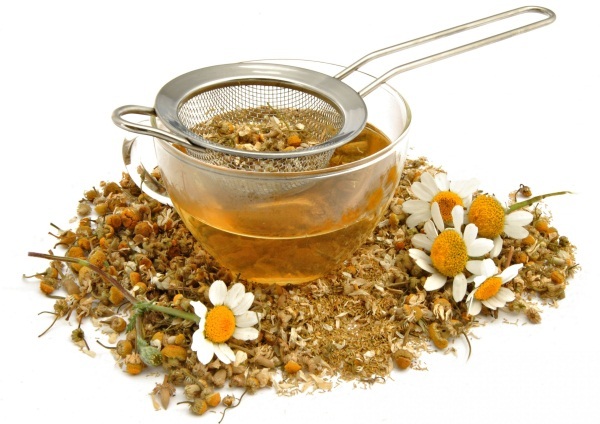
- A decoction of lingonberry leaves. 30 g of chopped lingonberry leaves pour 350 ml of hot water and hold on low heat for 5-7 minutes. The resulting mixture should be infused for about 30 minutes, and then filtered. The broth should be taken 3 times a day, 50-70 ml after meals.
- Infusion of birch leaves and horsetail herb. Take 2 tbsp. l. each type of plant and mix in a separate container. 1 tbsp. l. pour 500 ml of boiling water over the resulting mixture and insist under the lid for 2 hours. Cool and strain the resulting solution. It is necessary to take the infusion 2 times a day, 100 ml.
- Cranberry juice. 200 g of cranberries need to be chopped with a blender or crushed in a mortar. Place the resulting gruel in a saucepan and pour 1 liter of purified water, and then bring the liquid to a boil and boil for 15 minutes. Add 2 tsp to the cooled fruit drink. l. honey. Drink the drink throughout the day.
Other methods
Orange urine in women (the reasons are associated with the presence of pyelonephritis or cystitis) acts as an auxiliary symptom in diseases of the urinary system, which require an integrated approach to treatment.
Therefore, to eliminate symptoms, not only medications are used, but also physiotherapy methods:
- Inductothermy - the technique of external influence on the bladder using a special apparatus that produces an electromagnetic field. The procedure promotes the expansion of blood and lymph vessels, acceleration of metabolic processes and the outflow of fluid from the inflamed area.
- Electrophoresis - a method of influencing the affected areas using an electric current, which delivers drugs to the focus of the inflammatory process. The drugs enter the bladder wall due to the movement of ions. The procedure allows you to reduce inflammation and relieve spasms.
- EHF therapy - exposure by means of a high-frequency magnetic field. Thanks to the action of high-intensity waves, the achievement of the therapeutic effect is noticeable already after the first procedure.
- Ultrasound - a technique in which ultrasound of various frequencies is used. The procedure improves blood microcirculation in the affected area and contributes to the death of pathogens.
Possible complications
The advanced stages of diseases that provoke the release of orange urine can lead to the development of the following complications:
- with cystitis - the transition of an acute form of the disease to a chronic one, the development of pyelonephritis, paracystitis, salpingitis, adnexitis, leukoplakia;
-
with pyelonephritis - bacteriotoxic shock, renal failure, necrotizing papillitis, arterial hypertension;

- with urolithiasis - acute and chronic renal failure, acute calculous pyelonephritis, arterial hypertension.
Orange urine in women acts as a symptomatic manifestation of pathology in cases where accompanied by other signs in the form of deterioration in general health, fever, pain.
Other causes of color change include physiological processes caused by the body's natural reactions to the use of food, medications, or non-compliance with the drinking regime.
Video about abnormal urine colors
7 things your urine will tell you:



